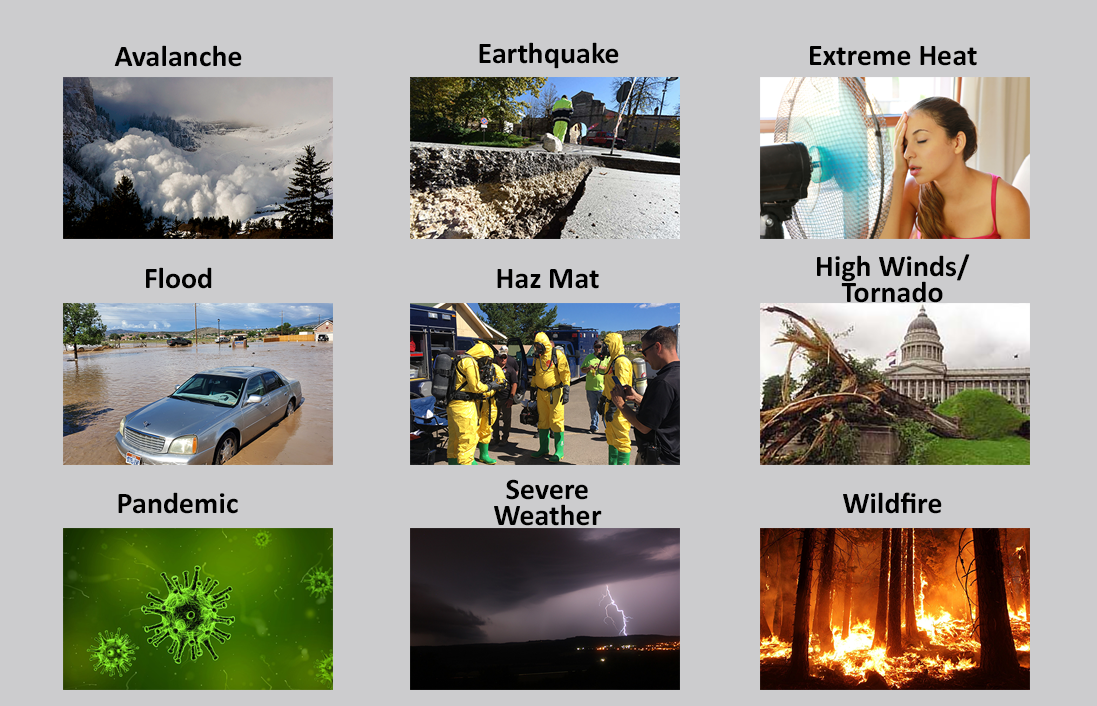Helping Utah "Be Ready" for Emergencies and Disasters
Wildfire Preparedness
Each year, Utah spends millions of dollars fighting wildfires, and each year, personal and public property is damaged or destroyed. Most wildfires are human-caused.
Protect your home and family from the possibility of wildfire by practicing simple wildfire safety and preparedness.
Wildfire Preparedness Link
Be Ready Utah Library
Most Popular Downloads:
Open BRU Library for all materials
Subscribe for Be Ready Utah Emails
Receive preparedness information you can use and share.






